From Manual to Smart: Pallet Inverters Transforming Russia's Material Handling
Are your warehouse operations held back by slow, dangerous, and inefficient manual processes? Every day, teams spend valuable hours manually transferring goods from one pallet to another. This manual labor not only creates bottlenecks but also leads to damaged products and, worse, costly worker injuries. You see the impact on your bottom line: wasted materials, lost time, and potential compensation claims. It feels like a constant battle against inefficiency. But what if you could automate this entire process, making it faster, safer, and far more reliable? Imagine a single machine that could eliminate these problems, transforming a major pain point into a streamlined, modern part of your workflow.
A pallet inverter is a machine that securely clamps a palletized load and then rotates it 180 degrees. This simple but powerful action allows for the quick and safe transfer of goods from one pallet to another. This is essential for replacing damaged pallets, switching from wood to plastic for hygiene or export, or recovering damaged goods at the bottom of a stack. This technology is transforming material handling in demanding markets like Russia by drastically reducing manual labor, improving worker safety, and accelerating logistics, turning a slow manual task into a fast, automated one.
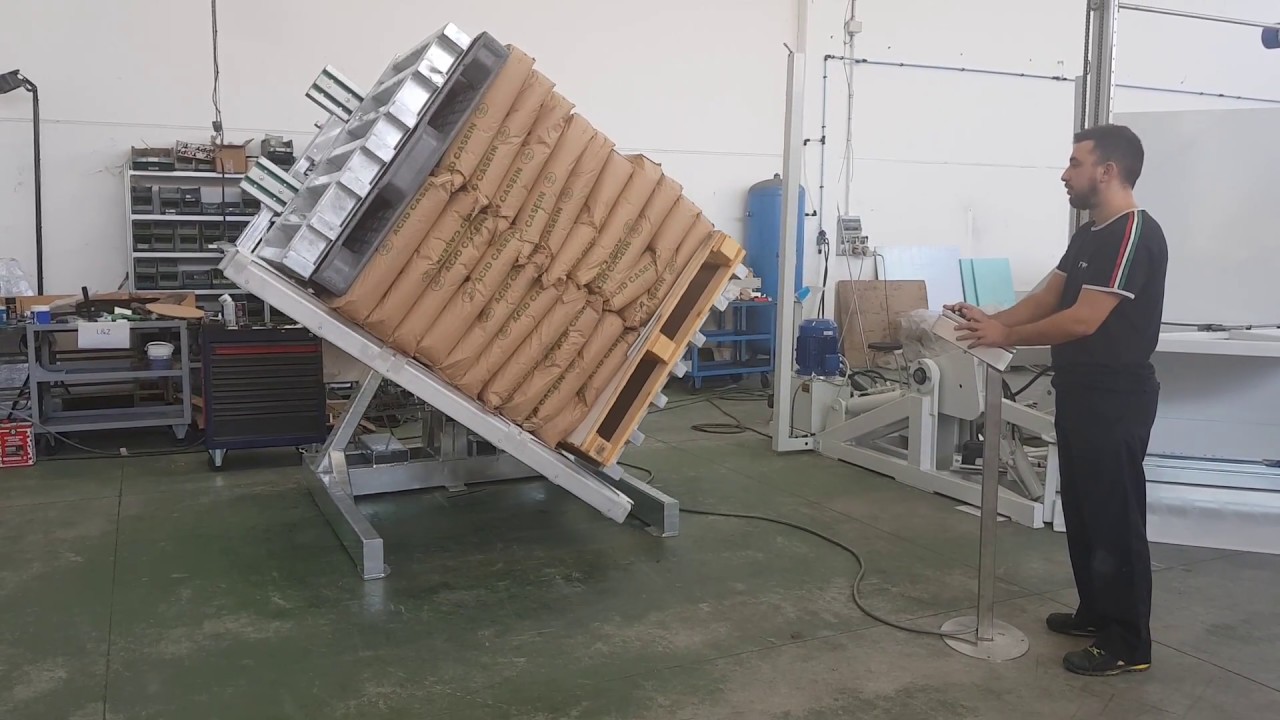
I have seen this transformation firsthand. For years, I watched factories struggle with the same manual handling problems. It’s why I became so passionate about engineering better solutions. This isn’t just about a new piece of equipment. It’s about a fundamental shift in how we approach logistics and efficiency. The move from manual to smart handling is a critical step for any modern facility looking to stay competitive. Let's explore how this technology works and why it's making such a significant impact, especially in the unique industrial environment of Russia.
What is a Pallet Inverter and How Does It Differ from a Pallet Changer?
You have likely heard different terms for equipment that handles pallet loads. "Pallet inverter" and "pallet changer" are often used interchangeably, and this creates confusion. Choosing the wrong machine for your specific application can be a very expensive mistake. You could invest in a system that can't handle your product's weight or stability, or one that doesn't fit into your existing workflow. This leads to frustration, forced workarounds, and a poor return on your investment. To make the right choice, you must first understand the fundamental difference in how these machines operate.
A pallet inverter solves this problem by clamping and rotating the entire load 180 degrees to switch pallets. In contrast, a pallet changer typically pushes the product stack from the source pallet to the destination pallet without a full rotation. While both achieve a similar goal, the inverter's method is often more secure and versatile, especially for unstable or delicate loads.
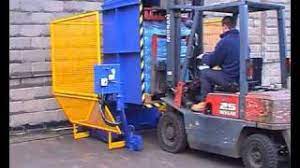
Dive Deeper into the Mechanics
To truly appreciate the difference, let's look closer at how each machine works. This technical understanding is crucial for any operations manager or owner who, like me, believes that the right tool is essential for success. When I started my own factory, I learned that a deep understanding of the equipment is just as important as understanding the finances.
The Pallet Inverter: A Rotational Approach
A standard pallet inverter operates on a simple, robust principle.
- Loading: A forklift places the entire palletized load into the machine's loading bay.
- Clamping: The machine has two platforms. One supports the load from the bottom, while a top platform lowers to apply gentle, even pressure on top of the load. This secures the products in place. The clamping pressure is often adjustable to handle everything from sturdy steel coils to delicate boxes of consumer goods.
- Rotation: The entire clamped assembly then rotates 180 degrees. The original pallet is now on top, and the new pallet can be placed on the now-exposed base.
- Pallet Exchange: The operator can easily remove the old pallet. A new pallet (e.g., a plastic one for a clean room or an export-compliant one) is placed on the load.
- Return: The machine rotates back 180 degrees. The clamping platform retracts, and the forklift can now remove the load on its new pallet.
This method is incredibly secure. Because the load is clamped from top to bottom throughout the process, it's ideal for unstable loads like stacked bags, bottles, or pails that might shift or fall if pushed.
The Pallet Changer: A Linear Approach
A pallet changer, or pallet transfer system, works differently.
- Loading: The source pallet is loaded into the machine.
- Push/Pull Mechanism: Side walls often move in to square up and support the load. Then, a pusher plate moves the entire stack of products horizontally off the old pallet and onto a new pallet waiting right beside it.
- Unloading: The load, now on its new pallet, is moved out of the machine.
This method can be faster for very stable, uniform loads like solid boxes. However, it requires the product stack itself to be stable enough to withstand being pushed. It is less suitable for products that are not perfectly squared or are prone to shifting.
Head-to-Head Comparison
To make an informed decision, a direct comparison is essential. As an engineer, I always rely on data and clear analysis.
| Feature | Pallet Inverter (Rotational) | Pallet Changer (Linear/Push) |
|---|---|---|
| Handling Method | Clamps and rotates 180° | Pushes load from one pallet to another |
| Best For | Unstable, irregular, or delicate loads (bags, pails, bottles) | Stable, uniform, and robust loads (solid boxes, crates) |
| Load Security | Very High - load is contained during rotation | Moderate - relies on load's inherent stability |
| Footprint | Typically more compact | Can be larger, especially with conveyors |
| Versatility | High - can handle a wide variety of product types | Moderate - optimized for specific load types |
| Common Use Cases | Food/pharma (hygiene switch), damaged pallet replacement, frozen goods separation | High-volume logistics, distribution centers with uniform products |
I remember a client in the beverage industry who nearly purchased a pallet changer for their bottled products. We walked through this exact comparison. We realized the pushing motion of a changer could cause the bottles to shift and potentially break. The secure clamping and rotating motion of an inverter was the clear, safe choice. It’s this kind of detailed analysis that prevents costly mistakes and ensures you get a solution, not just a machine.
Why are Russian Industries Embracing Pallet Inverter Technology?
Russia's industrial environment presents unique and demanding challenges. We are talking about vast distances, extreme weather conditions, and a strong focus on heavy industry. Relying on purely manual labor to handle palletized goods is not just inefficient; it's unsustainable. Imagine workers manually unstacking a frozen pallet in a -20°C warehouse or dealing with wooden pallets that have become wet and weak from snow. This leads to product damage, logistical delays, and a high risk of injury. In such a competitive market, these inefficiencies directly harm profitability.
Russian industries are increasingly adopting pallet inverters because this technology offers a direct, robust solution to these specific challenges. It allows them to improve logistical speed across the country's vast supply chains, protect goods from damage, enhance worker safety in harsh conditions, and meet the stringent pallet requirements for international exports.
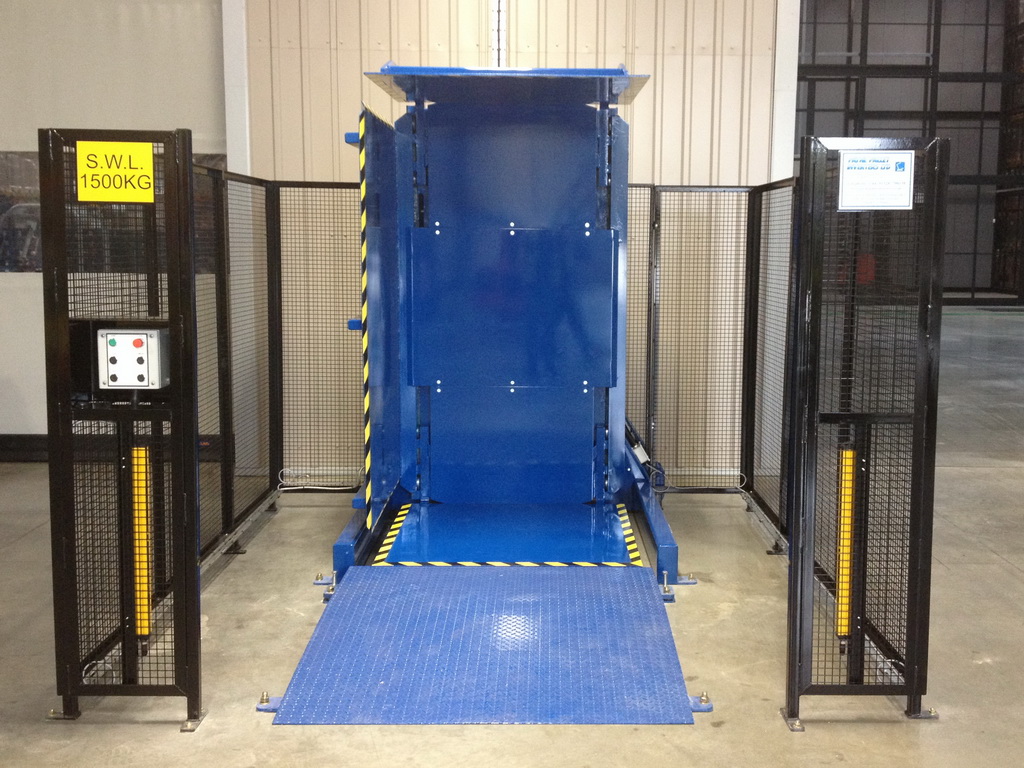
Dive Deeper into the Drivers
Having worked with clients across various climates and industrial sectors, I've seen how regional factors shape equipment needs. The reasons for adoption in Russia are a powerful mix of economic, logistical, and safety imperatives. This is not a trend; it's a strategic response to real-world operational pressures.
The Economic Drivers
For any factory owner, cost is a primary concern. In Russia, labor costs, while varying by region, are a significant operational expense. A pallet inverter can dramatically reduce these costs.
- Labor Reduction: Manually transferring a load from one pallet to another can take two workers 15-20 minutes. A pallet inverter does the same job with one operator in about 60 seconds. This frees up labor for more value-added tasks. For a business owner like Javier Morales, focused on reducing operational costs by 8%, this is a direct and measurable saving.
- Product Protection: Low-quality or damaged wooden pallets are a common problem. They can break during transit, leading to product loss. A pallet inverter allows a company to quickly switch outgoing shipments to high-quality, reliable pallets, drastically cutting down on damage-related costs. In industries like steel, where products are heavy and valuable, preventing damage is crucial for maintaining profit margins.
The Logistical Imperative
Logistics in Russia is a game of scale and standards.
- ISPM 15 Compliance: For exporting goods outside the Eurasian Economic Union, wooden pallets must be heat-treated and stamped according to ISPM 15 standards to prevent the spread of pests. Many companies receive goods on non-compliant domestic pallets. A pallet inverter provides a fast and simple way to switch loads to export-ready pallets right before shipping, avoiding customs delays and fines.
- Internal Hygiene and Quality Control: Many modern Russian facilities, especially in the food, pharmaceutical, and chemical sectors, have internal rules that require switching from external "dirty" wooden pallets to clean, captive plastic or aluminum pallets before entering a production or cleanroom area. An inverter automates this critical hygiene gateway.
The Safety and Environmental Factor
A responsible company owner cares about their people and their environmental impact.
- Worker Safety: Manual restacking of heavy loads is a leading cause of back injuries and other musculoskeletal disorders. I have personally seen the toll this takes on dedicated employees. Automating this process with a pallet inverter virtually eliminates this risk, leading to fewer injuries, lower insurance premiums, and a safer work environment. This aligns with the goals of any forward-thinking leader who knows that a safe workforce is a productive workforce.
- Environmental Regulations: As environmental standards in Russia become stricter, there is a push to reduce waste. By allowing companies to salvage products from a damaged pallet instead of writing off the entire load, inverters contribute to waste reduction. Furthermore, the ability to easily use and reuse durable plastic pallets supports a more sustainable operational model compared to disposable wooden pallets.
The adoption in Russia is not just about a single benefit. It's about how the pallet inverter solves multiple, interconnected problems that are particularly acute in that region.
How Do Smart Features in Pallet Inverters Drive Efficiency and Safety?
A basic, purely mechanical machine can get a job done. But in a modern factory, that's no longer enough. You need data, control, and integration. A "dumb" machine is an island in your production flow. It can't communicate its status, adapt to different products, or integrate into a larger automated system. This creates information gaps and operational bottlenecks that are difficult to diagnose and solve. The real transformation comes from intelligence.
Smart features, such as programmable logic controllers (PLCs), variable pressure sensors, and connectivity with factory management systems, are what elevate a pallet inverter from a simple tool to a strategic asset. These features drive efficiency by automating complex sequences and protecting products, while simultaneously enhancing safety through intelligent controls. They are the key to unlocking the machine's full potential.
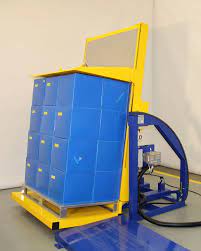
Dive Deeper into Smart Functionality
As an engineer who has built machines from the ground up, the evolution from simple switches to smart controls is one of the most exciting developments I’ve witnessed. It’s where the hardware meets the software to create a truly intelligent system. This is directly aligned with the goals of leaders like Javier Morales, who are pushing for digitalization and the deployment of MES and IoT platforms.
From Mechanical Levers to PLC Brains
The heart of a smart inverter is its Programmable Logic Controller (PLC).
- Pre-set Programs: Instead of an operator manually controlling each step, a PLC allows you to store multiple programs. You can have a program for "heavy steel coils" with maximum clamping pressure and a slow, steady rotation. You can have another for "boxed electronics" with light pressure and a faster cycle. The operator simply selects the product type on a touchscreen (HMI), and the machine executes the perfect sequence every time. This guarantees consistency and reduces the chance of human error.
- Automated Sequencing: The PLC can control not just the inverter but also the infeed and outfeed conveyors. This allows for fully automated, hands-off operation. A pallet moves into position, the transfer cycle runs, and the finished load moves out to the next station, all without operator intervention. This is how you achieve the 95% equipment uptime that modern factories target.
The Power of Intelligent Sensors
Sensors are the eyes and ears of a smart machine.
- Variable Pressure Control: Load cells or pressure sensors in the clamping mechanism provide real-time feedback to the PLC. This allows the machine to apply just enough force to secure the load without crushing it. This is critical for preventing product damage, which is a direct hit to your profit margin.
- Photo-Eyes and Safety Scanners: Optical sensors (photo-eyes) ensure the pallet is correctly positioned before the cycle starts, preventing machine damage. Laser safety scanners or light curtains create an invisible barrier around the machine. If a person or object crosses this barrier while the machine is in motion, it stops immediately. This is a non-negotiable feature for creating a truly safe work environment.
Integration with Your Factory's Digital Ecosystem
A smart machine does not work in isolation. It speaks the language of your factory.
- MES/WMS Integration: A smart inverter can be connected to your Manufacturing Execution System (MES) or Warehouse Management System (WMS). When a pallet is processed, the machine can automatically update the system. For example, it can log that "Pallet ID 123" has been successfully transferred to "Plastic Pallet ID 456" and is now ready for the cleanroom. This eliminates manual data entry, reduces errors, and provides the total production visibility that leaders like Javier are striving for.
| Smart Feature | Efficiency Benefit | Safety Benefit | Digital Transformation Impact |
|---|---|---|---|
| PLC Control | Consistent, optimized cycle times for different products. | Predictable, repeatable motion reduces unexpected events. | Enables integration into larger automated line sequences. |
| Variable Clamping | Eliminates product damage from crushing. | N/A | Can log data on clamping pressure used for different SKUs. |
| Safety Scanners | Reduces downtime from accidents. | Prevents personnel from entering the operational area. | Provides safety status data to central control systems. |
| WMS/MES Link | Automates data entry, provides real-time tracking. | N/A | Feeds live data into the "digital twin" of the factory. |
These smart features are what bridge the gap between a standalone machine and a fully integrated, data-driven production environment. They are essential for achieving the efficiency, safety, and digital transformation goals of a modern industrial facility.
What is the Real ROI of a Pallet Inverter for a Modern Facility?
As a factory owner, I know that every significant capital expenditure must be justified with numbers. A sales pitch about "improved efficiency" is not enough. You need to see a clear path to a return on your investment (ROI). You have to answer the question: "How will this machine pay for itself, and how quickly?" Without this analysis, you are investing on faith, not on facts. You risk allocating capital that could be better used elsewhere, and you cannot prove the value of your decision to your financial team or partners.
The real ROI of a pallet inverter is calculated from a combination of direct, tangible cost savings and significant, though sometimes less tangible, efficiency gains. The key factors are dramatic reductions in manual labor costs, minimized product damage, faster logistics, and lower risks of worker injury. In my experience, most industrial facilities that install a pallet inverter see a full payback on their investment in 12 to 24 months.
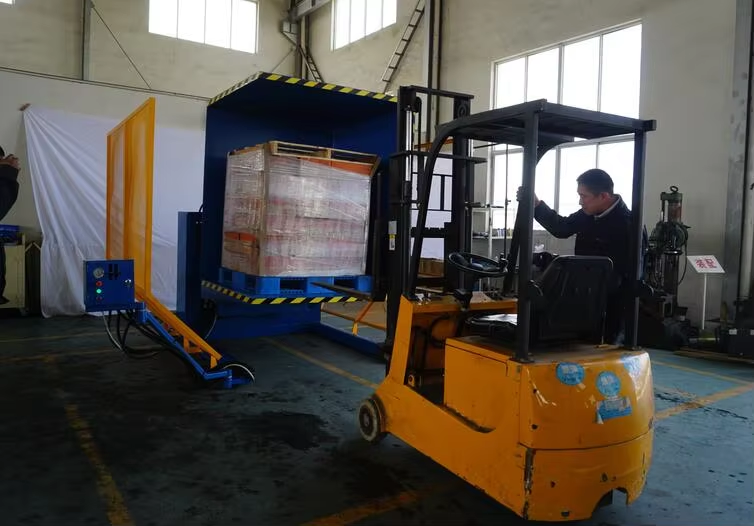
Dive Deeper into the Calculation
Let's break down the numbers in a way that a pragmatic owner or CEO would. When I consider a new machine for my own factory, this is exactly the kind of analysis I perform. It’s not about emotion; it’s about economics.
Calculating the Tangible Savings (The Hard Numbers)
These are the direct savings you will see on your profit and loss statement.
- Labor Savings: This is the biggest and most immediate saving.
- Manual Method: 2 workers x 15 minutes (.25 hours) per pallet.
- Inverter Method: 1 operator x 1 minute (.017 hours) per pallet.
- If you transfer 40 pallets a day, that's a saving of over 9 person-hours every single day.
- Calculation: (9 hours/day) x (Avg. hourly wage + benefits) x (250 workdays/year) = Annual Labor Savings. This number is often tens of thousands of dollars.
- Reduced Product Damage:
- Calculate the average monthly cost of goods damaged during manual pallet handling. This includes damage from dropping products and from pallet failures.
- An inverter reduces this by an estimated 90% or more.
- Calculation: (Monthly cost of damaged goods) x 12 x 90% = Annual Damage Savings.
- Reduced Worker Injury Costs:
- Back injuries from lifting are one of the most common and expensive workplace injuries.
- Consider the direct costs (medical bills, compensation) and indirect costs (lost productivity, temporary staff) of just one injury. Automating the process virtually eliminates this specific risk. This saving is harder to predict, but even preventing one serious injury can pay for the machine.
A Sample ROI Calculation for a Steel Plant
Let's use a hypothetical scenario for a steel plant, similar to one managed by a leader like Javier.
- Assumptions:
- Pallet Inverter Investment: $40,000
- Two workers at $20/hour (fully burdened) are reassigned from manual pallet handling. They were spending 4 hours/day each on this task.
- Product damage from handling averages $3,000/month.
- The plant operates 250 days/year.
| Cost Category | Manual Method (Annual Cost) | With Pallet Inverter (Annual Savings) |
|---|---|---|
| Labor Cost (8 hours/day x $20/hr x 250 days) | $40,000 | $40,000 (Workers reassigned) |
| Product Damage Cost ($3,000/mo x 12) | $36,000 | $32,400 (90% reduction) |
| Intangible Injury Risk | High | Low (Let's conservatively value this at $5,000/year) |
| Total Annual Savings | $77,400 |
- Payback Period Calculation:
- ($40,000 Investment) / ($77,400 Annual Savings) = 0.52 years, or approximately 6 months.
The Intangible, Yet Valuable, Gains
Beyond the hard numbers, there are other powerful returns:
- Increased Throughput: Faster turnaround times for trucks at the loading dock means you can ship more products per day.
- Improved Employee Morale: Removing a physically demanding and dangerous task shows you value your employees' well-being. This improves morale and can reduce staff turnover.
- Enhanced Reputation: A modern, safe, and efficient facility is more attractive to high-value customers and top talent.
The financial case is clear. A pallet inverter is not a cost center. It is a profit center that pays for itself quickly and continues to deliver value for years to come.
My Perspective as an Engineer and Factory Owner
Throughout my journey, from working on the factory floor to building my own company, SHJLPACK, I've learned one lesson over and over: technology is a powerful tool, but it's useless without the right strategy. The transition from manual labor to smart automation, which we see with pallet inverters, isn't just about replacing people with machines. It's about empowering your team. It's about making their work safer, less strenuous, and more valuable. It’s about focusing their human intelligence on problem-solving, not on repetitive, physical tasks.
For a leader like Javier Morales, who has built a massive steel operation from the ground up, these are not just small operational details. They are core strategic decisions. A pallet inverter isn't really about flipping pallets. It's about reducing operating costs to weather market fluctuations. It's about improving asset utilization to get more out of your facility. It's about future-proofing your business against rising labor costs and stricter safety regulations.
This is why our mission at SHJLPACK is to be more than a supplier. We are a knowledge-sharing platform. We believe that by sharing our engineering expertise and manufacturing insights, we can help you make the right strategic choice for your business. An investment in the right equipment is an investment in your people, your efficiency, and your future.
Conclusion
Pallet inverters are a strategic investment. They transform demanding manual tasks into smart, efficient, and safe operations, driving a powerful and rapid return on investment for modern industrial facilities.



